Lab of the Month – The D’Amelio Lab
The Lab
Created in 1974 by Professor Daniel Thomas, the Enzyme and Cell Engineering Unit UMR 7025 CNRS, is located in 2 different sites: the University of Technology of Compiègne, Compiègne, UTC, and the University of Picardie Jules Verne, Amiens, UPJV. The laboratory is directed by Professor Karsten Haupt and co-directed by Bérangère Avalle and Catherine Sarazin for the Compiègne and Amiens site, respectively.
The GEC Department, Enzymatic and Cell Engineering, at UPJV is dedicated to the study of cell biochemistry in animals, plants and microbes. NMR is a key technique in the research on the metabolism, structure and dynamics of biomolecules. The department has experience in the preparation and the modeling of biological membranes, an important part in the development of the project. UPJV provides access to molecular biology, electron microscopy, greenhouse and analytical platforms. In the latter, MS, LC/MS, GC/MS, and MS/MS, and NMR, 300 WB, 400, 500, and 600 MHz with auto-sampler, instruments are available.
The UPJV, in conjunction with UTC, University of Technology of Compiègne, has access to an S2 containment greenhouse, a laboratory for the manipulation of L2 biological agents, and a cell culture laboratory. GEC at UTC develops bioinspired materials or mimics dedicated to molecular recognition to address scientific and technological challenges. Expertise includes the production of molecularly imprinted polymers, MIPs, and the construction of libraries, oligonucleotide, peptide and protein libraries, and associated selection processes, Phage Display and SELEX, in order to identify new binders towards various identified targets.
At UPJV, Professor D’Amelio’s group has developed the ADAPTABLE web-server of antimicrobial peptides and studies their mechanism of action by NMR, CD, DLS and molecular dynamic simulations, all-atom and coarse-grained MD. Active permanent members are Francisco Ramos-Martin, NMR, CD, DLS and all-atom MD, and Benjamin Bouvier, all-atom and coarse-grained MD. The laboratory, directed by Professor Catherine Sarazin, also works on biomass valorisation, Dr. Eric Husson, antimicrobial testing, Dr. Isabelle Gosselin, and cell metabolism, Dr. Albrecht Roscher.
The People
The GEC unit has 35 permanent staff members, comprising 17 teacher-researchers, 6 at UPJV site, 2 CNRS research fellows, 1 at UPJV site, and 16 technical and administrative staff, 2 at UPJV site. The unit hosts about 20 Ph.D. students, several postdocs and a fluctuating number of master students and Erasmus students.

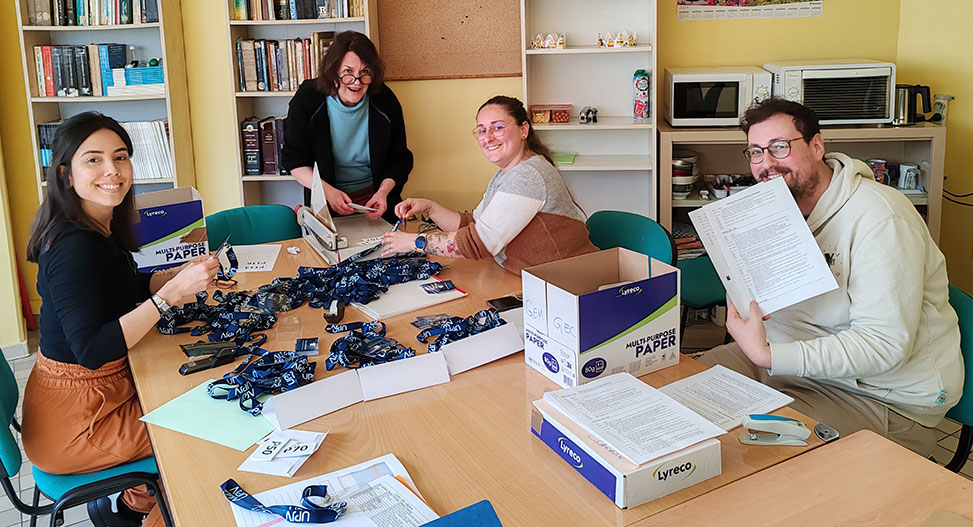
The Research
Focusing on D’Amelio’s group, gec-AMPs, the research is committed to biomedical research inspired by natural defense mechanisms. Host defense peptides are used in response to the major health challenges of our time: cancer, age-related diseases such as Alzheimer’s, Parkinson’s, and the growing threat of antimicrobial resistance, AMR. In particular, our research is organized into four main areas:
1. Study of the mechanisms of action of antimicrobial peptides against multidrug-resistant bacterial and fungal strains
At the heart of our approach is the study of antimicrobial peptides, AMPs, which are naturally produced by all kingdoms of life. This research has laid the foundation for a major tool: the ADAPTABLE database. Developed thanks to the doctoral funding of Dr. Ramos-Martin, Hauts-de-France region and FEDER, this platform not only catalogs known peptide sequences but also their biological activities. Its utility goes far beyond archiving: ADAPTABLE now allows, via an interactive web interface, the design of new antimicrobial sequences directly inspired by the host’s natural defenses.
This work led to the ANR NATURAL-ARSENAL project, which generated several high-impact publications, including one in the Journal of the American Chemical Society on the mechanism of action of the peptide Cathelicidin-BF, successfully tested on clinical strains from France and Germany. This work is the result of a collaborative effort involving several leading scientists in the field. Professor D’Amelio had the privilege of working with outstanding collaborators, including Burkhard Bechinger at the University of Strasbourg, Thierry Naas at the Bicêtre Hospital in Paris, and Niels Pfennigwerth at Ruhr University Bochum. The project also greatly benefited from the expertise of Klaas Martinus Pos at Goethe University Frankfurt, an expert in the structure of bacterial efflux pumps, and Rolf Müller at the Institute for Pharmaceutical Research in Saarland, whose discovery of new antibiotics provided key momentum for the research.
2. Design of peptides capable of disrupting pathological protein-protein interactions involved in cancer development
Peptides are not limited to antimicrobial activity. Their potential also extends to cancer treatment. By targeting faulty protein-protein interactions that characterize many tumor cells, our team is developing peptides capable of interrupting these pathological connections. Artificial intelligence enhances our ability to predict the structure and stability of candidate peptides. A collaboration with the CNIO in Spain is currently evaluating the effectiveness of these peptides as targeted therapeutic solutions against cancer.
3. Expression of active peptides within the human body’s microbiome
The clinical use of peptides remains hampered by technological challenges, particularly their high production cost and biological instability. To overcome these barriers, we are exploring synthetic biology by engineering probiotic strains capable of synthesizing therapeutic peptides directly within the human microbiome. A collaboration with Dr. Luis Bermúdez-Humarán from the Micalis Institute, INRAE, has recently demonstrated the feasibility of this approach, notably using bacteria such as Lactococcus for the production of anticancer peptides.
4. Design of anti-amyloidogenic peptides capable of crossing the blood-brain barrier for the treatment of neurodegenerative diseases
In the same spirit, we have extended our scope to neurodegenerative diseases, particularly Alzheimer’s. We are developing a new generation of peptides that not only inhibit the formation of toxic amyloid aggregates but can also cross the blood-brain barrier and reduce the impact of bacterial infections on neurodegeneration. This project, called RATIONALE, is supported by the Hauts-de-France region as part of the CPER MOSOPS program and is part of a collaborative dynamic within the A2U alliance, bringing together the universities of Artois, Fabien Gosselet, Amiens, Pascal Sonnet, and our own team. The results of this cooperation are currently under review in the International Journal of Macromolecules.
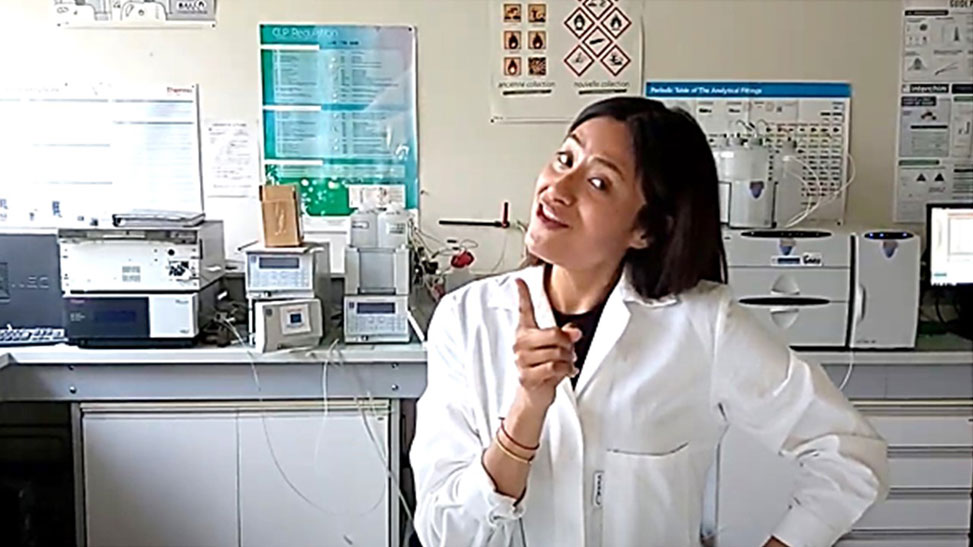
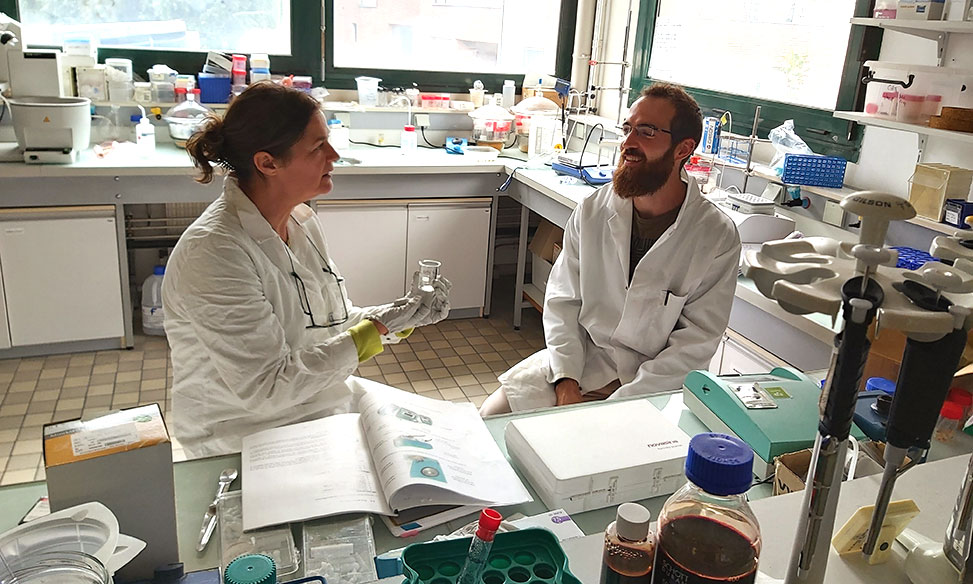

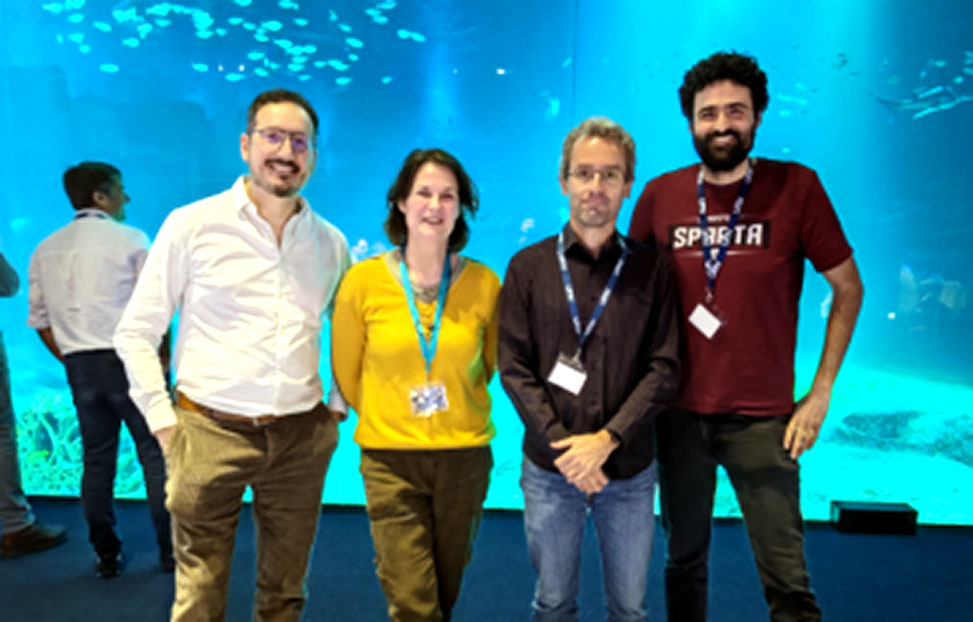
Publications
-
Salnikov E, et al. Cathelicidin-BF: A potent antimicrobial peptide leveraging charge and phospholipid recruitment against multidrug-resistant clinical bacterial isolates. J Am Chem Soc. 2025;147:11199–11215. doi:10.1021/jacs.4c17821 | Read a highlight of this paper on the APS website
-
Rima M, et al. In vitro activity of two novel antimicrobial compounds on MDR-resistant clinical isolates. Antibiotics (Basel). 2023;12. doi:10.3390/antibiotics12081265
-
Ramos-Martín F, D’Amelio N. Drug resistance: An incessant fight against evolutionary strategies of survival. Microbiol Res. 2023;14:507–542. doi:10.3390/microbiolres14020037
-
Adélaïde M, et al. The mechanism of action of SAAP-148 antimicrobial peptide as studied with NMR and molecular dynamics simulations. Pharmaceutics. 2023;15. doi:10.3390/pharmaceutics15030761
-
Ramos-Martín F, D’Amelio N. Biomembrane lipids: When physics and chemistry join to shape biological activity. Biochimie. 2022;203:118–138. doi:10.1016/j.biochi.2022.07.011
-
Herrera-León C, et al. The influence of short motifs on the anticancer activity of HB43 peptide. Pharmaceutics. 2022;14:1089. doi:10.3390/pharmaceutics14051089
-
Ramos-Martín F, et al. The potential of antifungal peptide Sesquin as natural food preservative. Biochimie. 2022. doi:10.1016/j.biochi.2022.03.015
-
Ramos-Martín F, et al. Bombyx mori cecropin D could trigger cancer cell apoptosis by interacting with mitochondrial cardiolipin. Biochim Biophys Acta Biomembr. 2022;1864:184003. doi:10.1016/j.bbamem.2022.184003
-
Ramos-Martín F, et al. Molecular basis of the anticancer, apoptotic and antibacterial activities of Bombyx mori cecropin A. Arch Biochem Biophys. 2022;715:109095. doi:10.1016/j.abb.2021.109095
-
Herrera-León C, et al. The impact of phosphatidylserine exposure on cancer cell membranes on the activity of the anticancer peptide HB43. FEBS J. 2021. doi:10.1111/febs.16276
-
Annaval T, et al. Antimicrobial bombinin-like peptide 3 selectively recognizes and inserts into bacterial biomimetic bilayers in multiple steps. J Med Chem. 2021;64:5185–5197. doi:10.1021/acs.jmedchem.1c00310
-
Ramos-Martín F, D’Amelio N. Molecular basis of the anticancer and antibacterial properties of CecropinXJ peptide: An in silico study. Int J Mol Sci. 2021;22. doi:10.3390/ijms22020691
-
Ramos-Martín F, et al. Antimicrobial peptide K11 selectively recognizes bacterial biomimetic membranes and acts by twisting their bilayers. Pharmaceuticals. 2020;14. doi:10.3390/ph14010001
-
Ramos-Martín F, et al. ADAPTABLE: A comprehensive web platform of antimicrobial peptides tailored to the user’s research. Life Sci Alliance. 2019;2. doi:10.26508/lsa.201900512

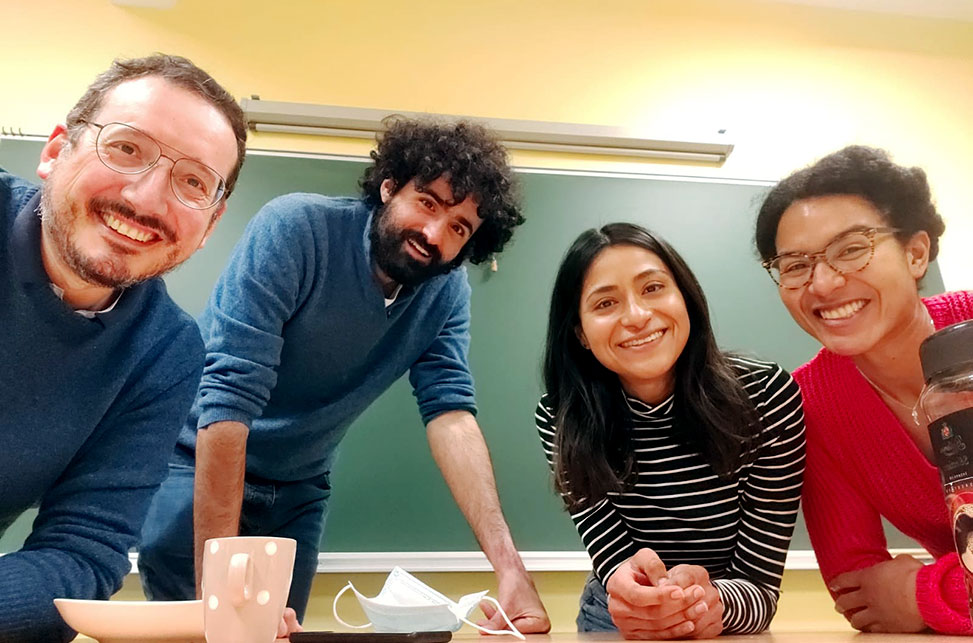
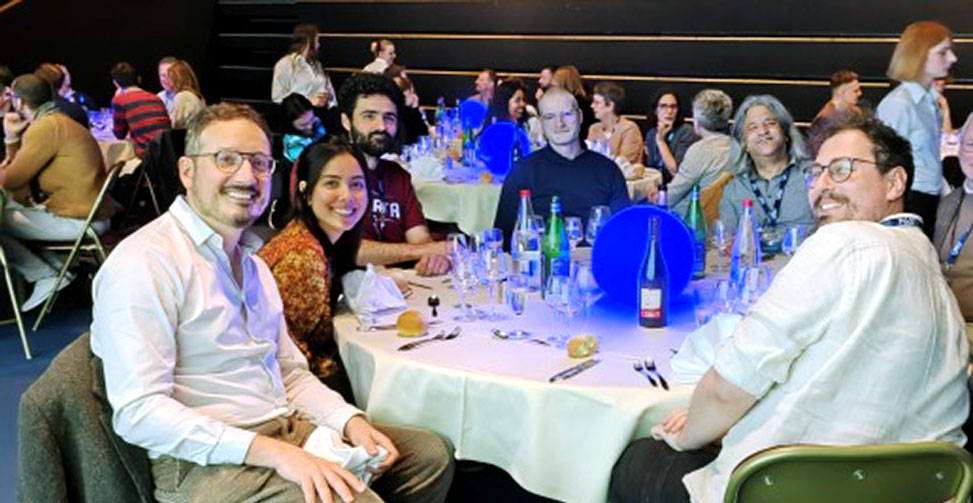
An Interview with Professor D’Amelio
Professor Nicola D’Amelio is a researcher in the field of structural biology. He holds a professorship at the Unité de Génie Enzymatique et Cellulaire, UGEC, UMR 7025, a joint research unit between CNRS, the Université de Picardie Jules Verne and the Technological University of Compiègne in France. D’Amelio’s work explores the structure–function relationships of enzymes and proteins, aiming to rationally design new peptides for applications in biomedicine.
Question: Your lab focuses on finding biochemical solutions to some of the major biomedical challenges of our time—namely antibiotic resistance and cancer. These seem like extremely different issues. What do they have in common, and how can your research target such diverse problems?
Answer 1: Indeed, my laboratory investigates conditions as distinct as cancer, Alzheimer’s disease and even multi-resistant bacterial or viral infections. At first glance, this may seem overly ambitious. However, cancer cells, bacteria, and viruses share some fundamental biochemical features. For example, both bacterial membranes and the outer membranes of cancer cells often expose phospholipids that carry a negative charge. These anionic surfaces can selectively attract positively charged, cationic, peptides. This shared characteristic allows us to design targeted therapeutic molecules—such as antimicrobial peptides—that can interact with these membranes, offering a potential strategy to combat both infections and cancer.
Q: Your laboratory also focuses on neurodegenerative diseases, which again seem quite different. How do these fit into your research program?
A: Neurodegeneration represents a major concern for our aging populations, making it an essential focus for future biomedical research. While it is indeed a distinct topic compared to cancer or infections—mainly because neurons typically do not divide, in contrast to cancer cells or pathogens—the underlying molecular language remains similar. In all cases, biological communication is mediated through molecular interactions, particularly protein-protein interactions.
By studying peptides, we can “speak” this molecular language and potentially disrupt pathological interactions. For instance, in Alzheimer’s or Parkinson’s disease, certain proteins aggregate into toxic amyloid fibrils that lead to neuronal death. Peptides can be designed to interfere with this process, preventing or reducing aggregation and thus neuronal damage.
Q: Your laboratory developed ADAPTABLE, a web server for antimicrobial peptides. There are already several databases of antimicrobial peptides. What does ADAPTABLE add to the field?
A: When I began this project to deepen our understanding of the mechanisms of action of antimicrobial peptides, I quickly realized how overwhelming the field was. Virtually all living organisms produce antimicrobial peptides — remarkably, even bacteria synthesize them to attack other bacteria. My objective was to identify common patterns across these peptides that could reveal the essential features required to selectively target specific pathogens.
ADAPTABLE contributes something unique. It does not simply catalog the primary amino acid sequences of peptides, as many databases do. Instead, it integrates detailed biological information—such as the peptide’s origin, target organism, and functional data—enabling users to build and analyze families of peptides from different biological sources that share a common activity, for instance, targeting the same pathogen.
By comparing these sequences and their associated metadata, researchers can identify key structural or functional motifs, which can then be used to design new peptides with improved specificity, potency, or stability. In this way, ADAPTABLE serves not just as a repository, but as a tool for discovery and design, tailored to the user’s specific research needs.
Q: What are interfering peptides, and why are they important?
A: Interfering peptides represent a fascinating class of molecules, fully designed by scientists using structural data from previous research. They serve as a bridge between structural biology and clinical application.
As mentioned earlier, protein-protein interactions are the cornerstone of molecular communication in cells. These interactions form complex signaling pathways, similar to electrical circuits, where a signal travels through a cascade of protein contacts to produce a specific biological effect. In diseases like cancer, this signaling can become dysregulated—like an electrical circuit that cannot be switched off.
Interfering peptides act like “molecular decoys” that block these signals. In molecular terms, an interfering peptide can mimic the interaction surface of protein B, binding to A, without being able to continue the signal to protein C.
Thanks to artificial intelligence, we can now predict the three-dimensional structures of such peptides, helping us design amino acid sequences that fold appropriately to replicate specific protein interfaces. Because they interfere at the level of fundamental molecular interactions, these peptides have broad applications—from cancer to metabolic disorders and neurodegeneration.
Q: What is the translational potential of your research—how close are these discoveries to real clinical applications?
A: Although some peptides are successfully used for various applications, their use in clinics has been severely limited by the high cost of production and their short half-life in plasma, although, in the latter case, protection by proteases can be achieved by delivery in nanoparticles.
The fundamental role of human bacterial flora in metabolic, digestive, immune and even neurological functions is becoming more and more apparent. Recent advances in molecular biology and discoveries in the organization of the human microbiome, have allowed the development of engineered bacteria, able to produce bioactive molecules in response to stimuli for various applications.
These include combating pathogens and cancer. Engineered bacteria open the way to the controlled production of peptides in situ. Not only such an application would solve the problem of peptide delivery to the site of infection but it would also bypass the limit of their production cost. This powerful therapeutic approach could be targeted to regions of the body harboring the microbiome—such as the respiratory tract, gastrointestinal system, and reproductive tract—offering potential treatments for colon cancer, viral respiratory infections, and even sexually transmitted diseases.


